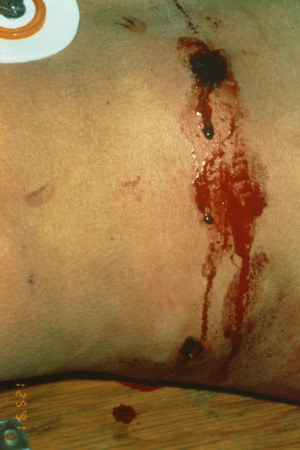Clearance of the cervical spine can often be done using clinical criteria alone (see this video at http://youtu.be/NhjF9kDOcjE). If this is not possible, a combination of radiologic and clinical evaluation is usually carried out.
In some cases, radiographic studies (usually CT) are normal, but there is pain on clinical exam. Our next step is to send the patient to xray for flexion and extension views. This exam is performed by removing the collar while the patient is sitting, so the thoracic and lumbar spines must be clear before ordering this. The patient then gently flexes and extends the neck to their limits of comfort. Images are then obtained at the limits of flexion and extension. The premise is that a normal, awake patient cannot and will not move their neck beyond their comfort level to the point where they could cause themselves neurologic injury.
It is very important that you look at the images yourself. The radiologist may review the images and will report that “there is no evidence of subluxation at the limits of flexion and extension.” But the patient may have barely moved their neck!
The question is: how much flexion and extension do you need to have to clear the spine?
The answer is not easy to find, and is buried in literature from the 1980s and 90s. According to the EAST guidelines, the ideal amount is 30 degrees from neutral for both flexion and extension. This is not always achievable in elderly patients, so in those cases you must use your judgment. Talk to the patient to find out if they stopped moving their neck forward or backward due to pain, or because they just can’t move it that far.
Trouble signs to look for are:
- Subluxation of more that 2mm at any level
- Angulation of more than 11 degrees
Any abnormality should prompt a spine consult.
If the study is not abnormal but the amount of flexion and/or extension is not adequate, there are two options. First, just leave the collar in place and try again in a week or so and try again. This will allow any soft tissue injuries to get better and may allow a successful repeat study. The alternative is a more costly and less well-tolerated MRI.
References:
- EAST Practice Guidelines, Identifying Cervical Spine Injuries Following Trauma – Update (2000).
- Defining radiographic criteria for flexion-extension studies of the cervical spine. Robert Knopp et al. Ann Emerg Med. 2001 Jul;38(1):31-5.



